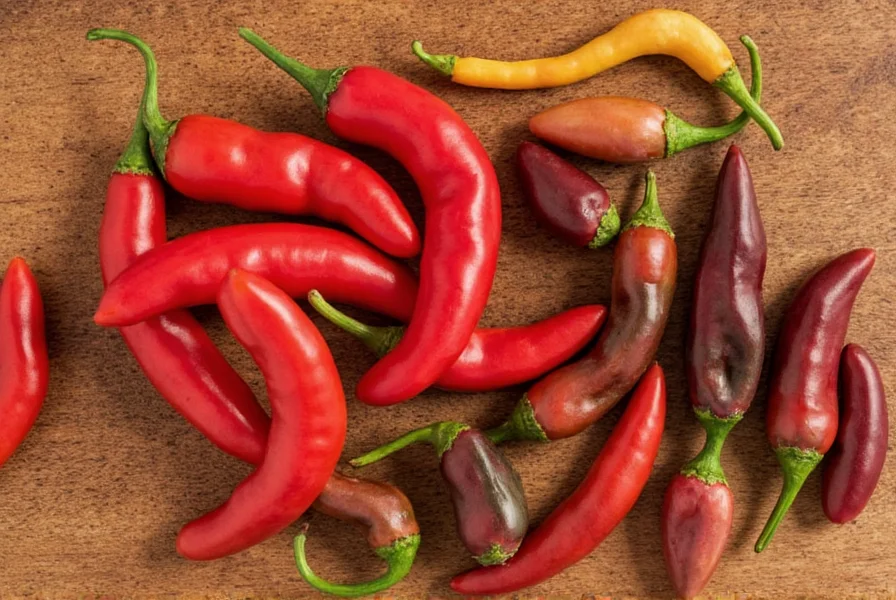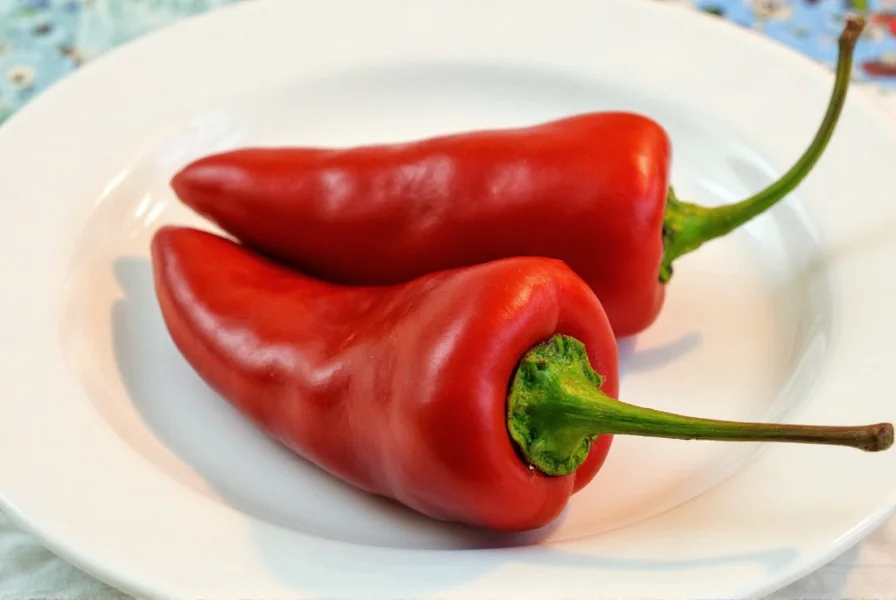The pasilla chile pepper (also known as chile pasilla) is a dried Mexican chili pepper with a mild heat level of 1,000-2,500 Scoville Heat Units (SHU), known for its deep, smoky, earthy flavor with subtle sweet undertones. It's a staple ingredient in traditional Mexican cuisine, especially in mole sauces, enchilada fillings, and slow-cooked stews. Unlike hotter chilies, pasilla delivers rich complexity without overwhelming heat, making it ideal for beginners and experienced cooks alike.
| Chili Type | Heat Level (SHU) | Flavor Profile | Best Uses |
|---|---|---|---|
| Pasilla | 1,000 - 2,500 | Earthy, smoky, slightly sweet | Mole sauces, stews, enchilada fillings |
| Jalapeño | 2,500 - 8,000 | Mild, grassy, slightly tangy | Salsas, tacos, pickling |
| Ancho | 1,000 - 1,500 | Smoky, sweet, mild | Sauces, enchiladas, roasting |
| Chipotle | 2,500 - 8,000 | Smoky, spicy, deep | Barbecue sauces, marinades, adobo |
What Is a Pasilla Chile Pepper?
The pasilla chile pepper is the dried form of the fresh chilaca pepper, native to Mexico. When fresh, it's dark green and called "chilaca," but when dried, it turns deep brown with a wrinkled appearance (hence "pasilla," meaning "little raisin" in Spanish). It's one of the "holy trinity" of Mexican dried chilies, alongside ancho and guajillo, forming the foundation of countless traditional dishes.

Flavor Profile and Heat Level
Pasilla chiles offer a nuanced flavor profile that balances smokiness, earthiness, and subtle sweetness. Unlike hotter chilies that dominate dishes with heat, pasilla provides depth without overpowering other ingredients. Its heat level (1,000-2,500 SHU) is similar to a jalapeño but with more complexity, making it perfect for sauces where flavor matters more than spice.
Cooking with Pasilla Chiles: Pro Tips
- Rehydration technique: Soak dried pasillas in hot (not boiling) water for 20-30 minutes until pliable. For enhanced flavor, add a pinch of sugar or a bay leaf to the soaking water.
- Seed removal: Always remove seeds and membranes before blending to maintain mild heat. For extra smokiness, lightly toast the dried chiles before soaking.
- Classic mole recipe: Blend 2 rehydrated pasillas with 1 cup tomatoes, 1/2 cup toasted almonds, 1 tsp cumin, and 2 oz dark chocolate for authentic mole negro.
- Vegetarian option: Use pasilla in roasted vegetable stews with sweet potatoes and black beans for a smoky, hearty dish.

Where to Buy and What to Look For
- Dried pasillas: Choose dark brown, flexible chiles with a strong aromatic scent. Avoid brittle or moldy pieces.
- Fresh chilacas: Look for firm, dark green peppers without wrinkles or soft spots.
- Top sources: Latin American grocery stores, specialty spice retailers (like Penzeys or Spice House), and trusted online retailers (e.g., Amazon's "Mexican Ingredients" section).
Substitutes When Pasilla Isn't Available
- Ancho chile: Closest substitute with similar sweetness but slightly milder heat. Use 1:1 ratio.
- Mulato chile: Offers deeper chocolate notes; ideal for mole sauces. Use 1:1 ratio.
- Guajillo + chipotle: For smokier flavor, mix 2 parts guajillo with 1 part chipotle (adjust for heat).
- Not recommended: Avoid using only cayenne or red pepper flakes - they lack pasilla's complexity and will make dishes too hot.
Frequently Asked Questions
What's the difference between pasilla and ancho chiles?
Ancho chiles are dried poblanos, while pasillas are dried chilacas. Anchos are sweeter with less smokiness (1,000-1,500 SHU), while pasillas have deeper earthy notes and slightly higher heat (1,000-2,500 SHU). Both are used in mole, but pasillas add more complexity to sauces.
Can I use pasilla chiles in non-Mexican dishes?
Absolutely! Pasilla's smoky-sweet profile works well in American-style chili con carne, barbecue sauces, roasted vegetable dishes, and even chocolate desserts. Try adding a rehydrated pasilla to tomato soup for depth, or blend into a rub for grilled chicken.
How long do dried pasilla chiles last?
Properly stored in an airtight container away from light, dried pasillas maintain peak flavor for 6-12 months. For longer storage (up to 2 years), keep them in the freezer. Always check for musty smells or mold before use.
Conclusion
The pasilla chile pepper is more than just a spice - it's a flavor architect that elevates dishes with its unique smoky-sweet complexity. Whether you're making authentic mole or experimenting with global cuisine, mastering pasilla opens doors to rich, nuanced cooking. Remember: always rehydrate properly, remove seeds for controlled heat, and pair with complementary ingredients like chocolate, cumin, and tomatoes to unlock its full potential.










 浙公网安备
33010002000092号
浙公网安备
33010002000092号 浙B2-20120091-4
浙B2-20120091-4